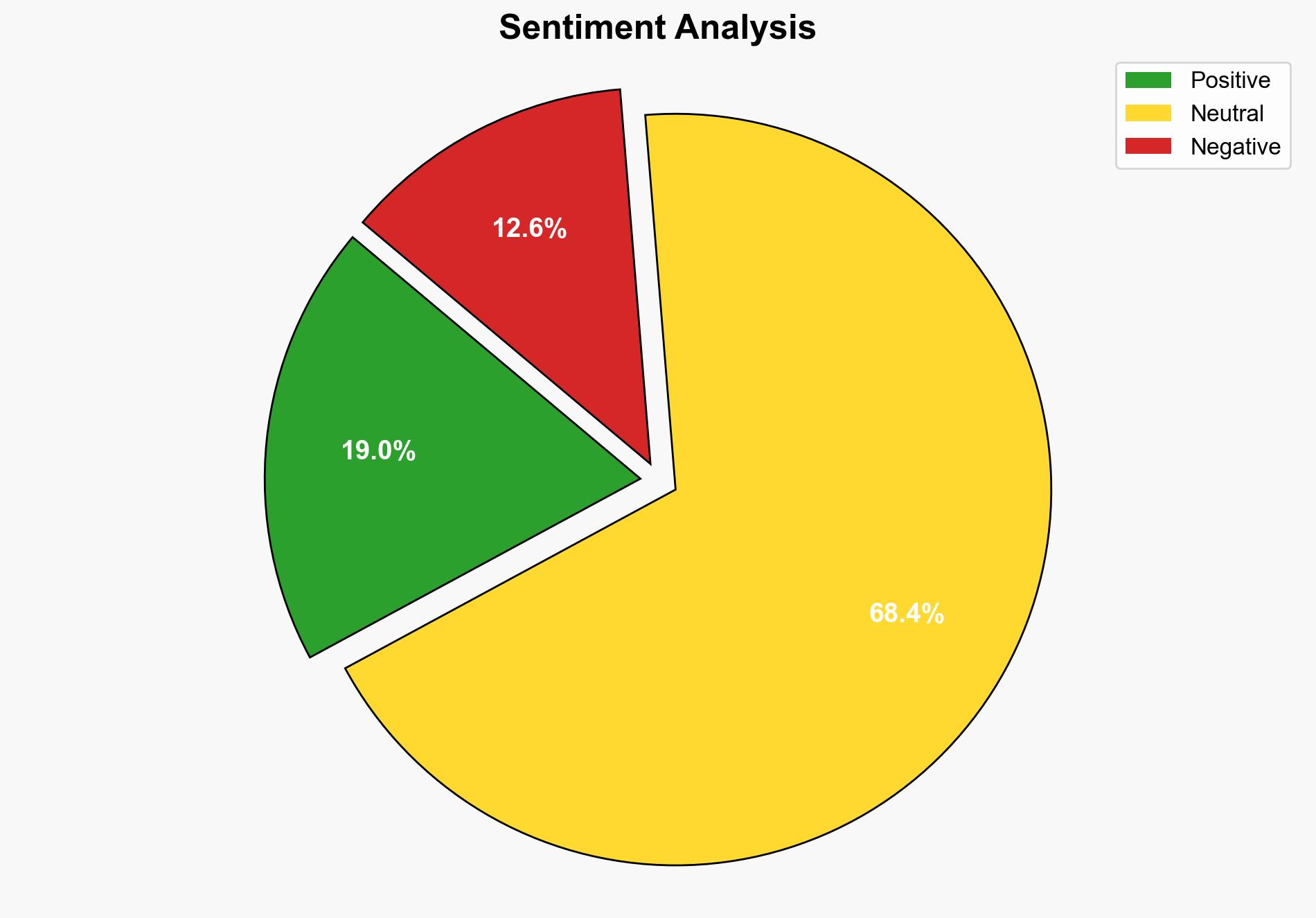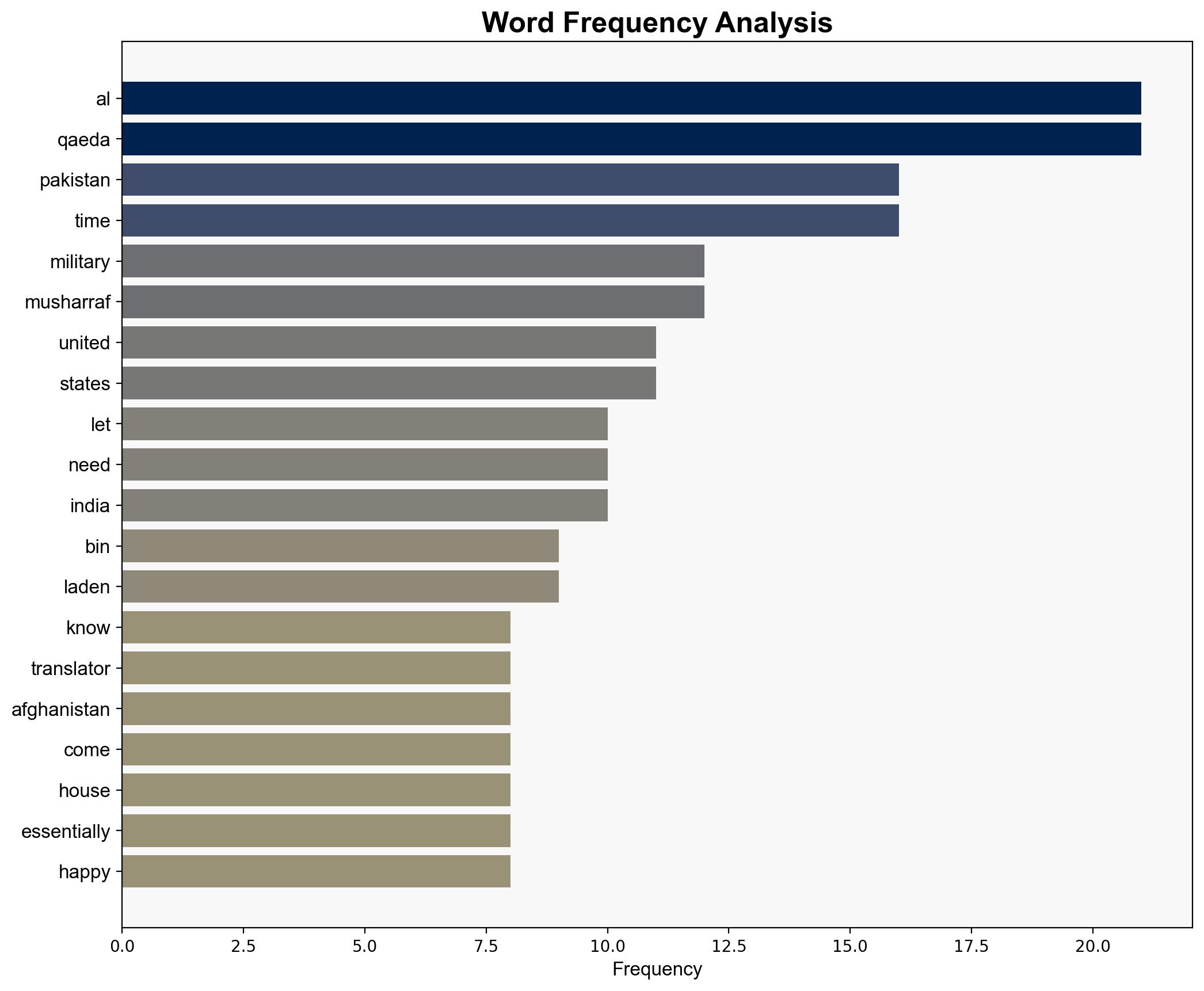‘Osama bin Laden escaped disguised as a woman US translator was an Al-Qaeda operative’ Ex CIA officer John Kiriakou – The Times of India
Published on: 2025-10-25
Intelligence Report: ‘Osama bin Laden escaped disguised as a woman US translator was an Al-Qaeda operative’ Ex CIA officer John Kiriakou – The Times of India
1. BLUF (Bottom Line Up Front)
The most supported hypothesis is that operational failures and potential infiltration by Al-Qaeda operatives within US military operations contributed to Osama bin Laden’s escape from Tora Bora. Confidence in this hypothesis is moderate due to reliance on a single source and lack of corroborative evidence. Recommended action includes reviewing historical operational security protocols and enhancing current counterintelligence measures.
2. Competing Hypotheses
1. **Operational Failure and Infiltration Hypothesis**: Osama bin Laden escaped due to a combination of operational failures and infiltration by an Al-Qaeda operative within US military operations, as suggested by John Kiriakou.
2. **Strategic Deception Hypothesis**: The escape was a result of strategic deception by Al-Qaeda, exploiting US operational delays and intelligence gaps, without necessarily having an insider within the US military.
Using ACH 2.0, the first hypothesis is more supported due to Kiriakou’s claims of an Al-Qaeda operative influencing decisions at Tora Bora. However, the lack of independent verification weakens its overall strength.
3. Key Assumptions and Red Flags
– **Assumptions**: The credibility of John Kiriakou’s account is assumed, as is the effectiveness of Al-Qaeda’s infiltration capabilities.
– **Red Flags**: The absence of corroborative evidence from other sources raises questions about the reliability of the claims. Potential cognitive bias includes confirmation bias, where information is interpreted to fit pre-existing beliefs about US operational failures.
4. Implications and Strategic Risks
– **Implications**: If infiltration was indeed a factor, it suggests vulnerabilities in US military operations that could be exploited in future conflicts.
– **Strategic Risks**: Continued infiltration could lead to compromised operations, loss of strategic assets, and increased terrorist activities. Geopolitically, this could strain US relations with Pakistan and complicate counter-terrorism efforts.
5. Recommendations and Outlook
- Conduct a thorough review of historical and current counterintelligence protocols to identify and mitigate infiltration risks.
- Enhance intelligence-sharing mechanisms with allies to corroborate claims and improve situational awareness.
- Scenario Projections:
- **Best Case**: Improved counterintelligence measures prevent future infiltrations, strengthening operational security.
- **Worst Case**: Continued infiltration leads to significant operational failures and increased terrorist activities.
- **Most Likely**: Incremental improvements in security protocols reduce but do not eliminate infiltration risks.
6. Key Individuals and Entities
– John Kiriakou
– Osama bin Laden
– General Frank (inferred from context)
– Pervez Musharraf
7. Thematic Tags
national security threats, cybersecurity, counter-terrorism, regional focus




